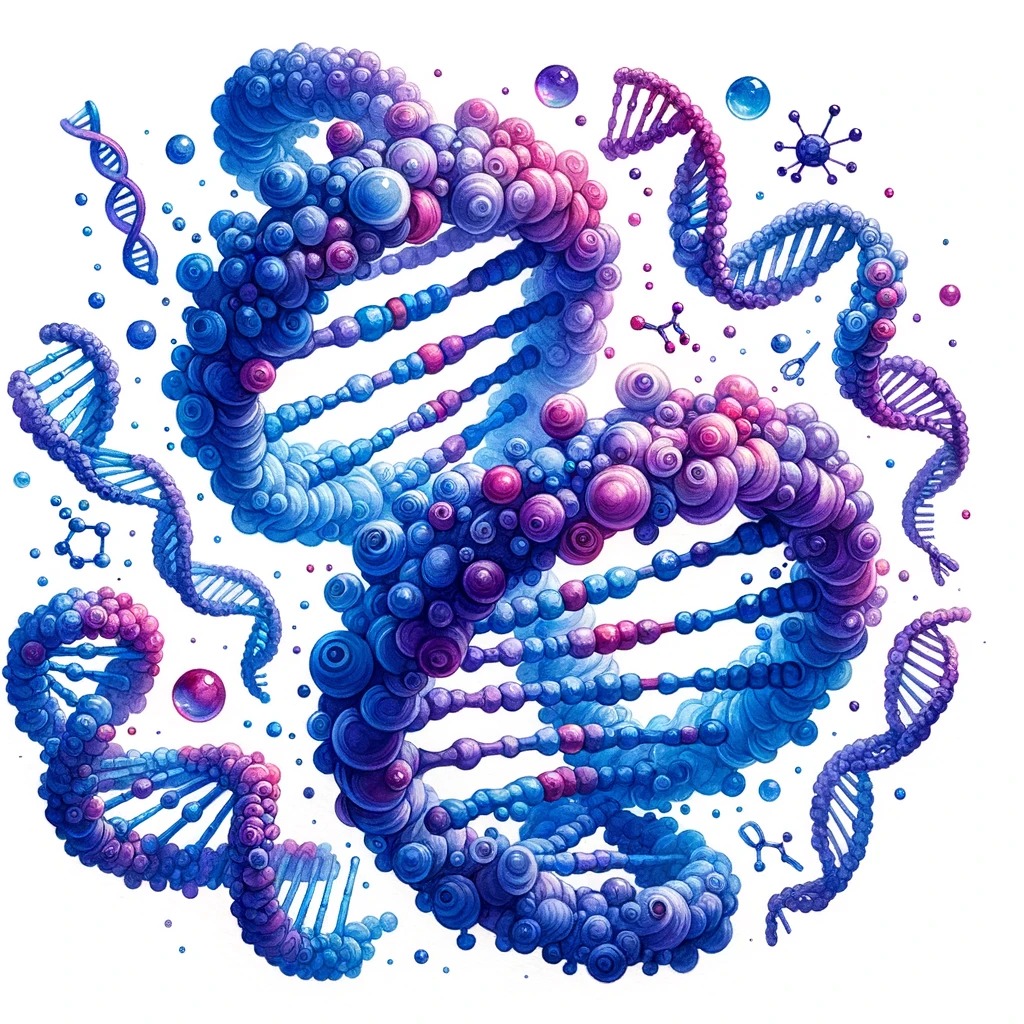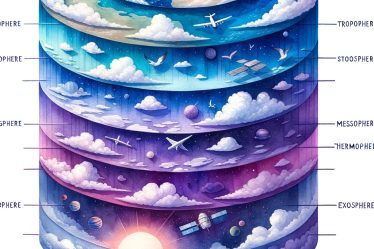
Nucleic acids are the macromolecules that store and transmit the genetic information that cells need to function. They are the blueprints of life, guiding the structure and function of all living organisms. Understanding the function of nucleic acids is not just a matter of scientific curiosity; it’s crucial for fields ranging from medicine to agriculture. Tutoring and biochemistry lessons can provide invaluable assistance for those who find these topics challenging.
Function of Nucleic Acids: Understanding the Building Blocks of Life
Nucleic acids are complex molecules that come in two primary forms: DNA (Deoxyribonucleic Acid) and RNA (Ribonucleic Acid). While they share many similarities, each has a unique role in biological systems. This blog aims to delve into the fascinating world of nucleic acids, exploring their types, structures, and functions. If you struggle to grasp these concepts, consider seeking the help of a tutor or enrolling in biochemistry classes.
Here’s a Glimpse of What You’ll Learn:
- Types of nucleic acids: DNA and RNA, and their roles.
- Structure of nucleic acids, including sugar-phosphate backbone and nitrogenous bases.
- Function of nucleic acids beyond genetic storage.
- Importance of tutoring and biochemistry lessons.
Are you interested in other subjects? We’ve got great free study guides for Biology, English, French, and Music.
Types of Nucleic Acids: DNA and RNA Unveiled
DNA (Deoxyribonucleic Acid): The Genetic Blueprint of Life
DNA, or Deoxyribonucleic Acid, is one of the two main types of nucleic acids present in cells. It serves as the genetic blueprint for all known living organisms, and some viruses. DNA is primarily located in the cell nucleus in eukaryotes and the cytoplasm in prokaryotes. Its role in genetics is paramount; it contains instructions for developing, functioning, and reproducing living organisms. These instructions are encoded in the form of genes, which are segments of DNA that specify how to build proteins.
The Genetic Role of DNA: From Genes to Proteins
The genetic role of DNA is extensive. It stores genetic information and regulates various cellular processes through gene expression. The DNA sequence is transcribed into RNA and then translated into proteins. These proteins carry out myriad functions, from structural roles to enzymatic activities, that are essential for the organism’s survival.
Locating DNA: Where It Resides in Cells
In eukaryotic cells, DNA is primarily found in the nucleus packaged into chromosomes. Each chromosome is a long, linear DNA molecule associated with proteins called histones. In prokaryotic cells, DNA is in the cytoplasm and is usually circular. Some organelles like mitochondria and chloroplasts also contain their DNA.
Understanding RNA: The Key Player in Protein Synthesis
RNA, short for Ribonucleic Acid, differs from DNA in several ways, including its single-stranded structure and the sugar ribose in its backbone. RNA takes center stage in protein synthesis, acting as the go-between for DNA and ribosomes, where proteins come to life.
Types of RNA: mRNA, tRNA, rRNA Explained
RNA comes in various forms, each with a specialized role in the cell. Let’s break them down:
- mRNA (Messenger RNA): Think of mRNA as the messenger that carries genetic blueprints from DNA to the ribosomes. It sets the stage for protein creation.
- tRNA (Transfer RNA): This RNA type delivers the right amino acids to the ribosome, guided by its “anticodon” that matches up with mRNA’s codon.
- rRNA (Ribosomal RNA): Found in ribosomes, rRNA aligns mRNA and tRNA correctly, ensuring a smooth protein synthesis process.
How RNA Directs Protein Synthesis: A Closer Look
In protein synthesis or translation, RNA plays diverse yet interconnected roles. mRNA dictates the amino acid sequence, tRNA brings the amino acids to the ribosome, and rRNA helps assemble them into a functional protein. Together, they translate genetic instructions into the proteins that perform various cellular functions.
Ethanol and Alcohols in chemistry and how Beer is Made.
Structure of Nucleic Acids: Beyond the Double Helix
When it comes to understanding the intricacies of life at the molecular level, nucleic acids stand as monumental structures. These macromolecules are more than just carriers of genetic information; their structure is a marvel of biological engineering. Let’s delve into the fascinating architecture of nucleic acids.
The structure of nucleic acids like DNA and RNA is far more than a twisted ladder or a single strand. At the core of these structures are nucleotides, the basic building blocks that give nucleic acids functionality and complexity.
Nucleotides: Unveiling the Basic Building Blocks
A nucleotide has three main components: a sugar molecule, a phosphate group, and a nitrogenous base. These elements combine to form the backbone and the steps of the nucleic acid structures.
Key Components: Sugar, Phosphate, and Nitrogenous Base
- Sugar: In DNA, the sugar is deoxyribose, while in RNA, it’s ribose. The sugar connects to the phosphate group and a nitrogenous base to form a nucleotide.
- Phosphate: The phosphate group links the sugar of one nucleotide to the sugar of another, forming the backbone of the nucleic acid strand.
- Nitrogenous Base: These are organic molecules that contain nitrogen. In DNA, the bases are Adenine (A), Thymine (T), Cytosine (C), and Guanine (G). In RNA, Thymine is replaced by Uracil (U).
The Sugar-Phosphate Backbone: The Structural Framework of Nucleic Acids
The sugar-phosphate backbone is what gives nucleic acids their linear structure. It forms the ‘sides’ of the DNA ladder and serves as the main structural framework for both DNA and RNA. This backbone is created when the phosphate group of one nucleotide bonds with the sugar molecule of another nucleotide. This forms a covalent bond known as a phosphodiester bond.
The sequence of these sugar and phosphate units creates a directional structure, with a 5′ end and a 3′ end, which is crucial for various biological processes like DNA replication and RNA transcription. The backbone is highly stable, providing the necessary rigidity while still allowing some flexibility for the molecule to coil into its characteristic shapes, such as the DNA double helix.
Nitrogenous Bases: The Language of DNA and RNA
The nitrogenous bases in nucleic acids serve as the ‘letters’ in the genetic code, and they are essential for storing and transmitting genetic information. In DNA, these bases are Adenine (A), Thymine (T), Cytosine (C), and Guanine (G). In RNA, Thymine is replaced by Uracil (U), making the bases Adenine, Uracil, Cytosine, and Guanine.
These bases form pairs through hydrogen bonds, adhering to specific base-pairing rules. In DNA, Adenine pairs with Thymine, and Cytosine pairs with Guanine. In RNA, Adenine pairs with Uracil. This specificity ensures the accurate transmission of genetic information during replication and transcription.
The Double Helix: More Than Just a Twisted Ladder
The double helix structure of DNA is one of the most iconic images in science. This structure is formed by two antiparallel strands of DNA winding around each other. The sugar-phosphate backbone makes up the ‘sides’ of the ladder, while the nitrogenous bases form the ‘rungs.’
The base pairing rules are crucial for the stability of the double helix. Adenine always pairs with Thymine through two hydrogen bonds, and Cytosine pairs with Guanine through three hydrogen bonds. This specific pairing ensures that the DNA strands are complementary, which is vital for accurate replication and transcription.
The helical structure is not just for show; it serves essential biological functions. It allows for the compact storage of large amounts of genetic information and provides a mechanism for DNA to undergo replication and repair. The helix is flexible, allowing it to bend and coil, facilitating interactions with proteins and other molecules inside the cell. A specialized tutor can simplify the function of nucleic acids, making this complex topic more accessible.
Discover the chemistry behind Water, Photosynthesis, Water Pollution and Air.
Function of Nucleic Acids: More Than Just Genetic Carriers
Genetic Information Storage: Main Functions of Nucleic Acids
DNA, or Deoxyribonucleic Acid, is the primary storage unit for genetic information in almost all living organisms. It encodes the instructions for building and maintaining the organism, from the simplest bacteria to complex multicellular entities like humans. But how does DNA store this vital information?
The answer lies in the sequence of its nitrogenous bases—Adenine (A), Thymine (T), Cytosine (C), and Guanine (G). These bases are arranged in a specific sequence along the DNA strand, and it’s this sequence that encodes genetic information. Each set of three bases, known as a codon, corresponds to a specific amino acid or a functional instruction like ‘start’ or ‘stop.’
When a gene is expressed, the DNA sequence is transcribed into RNA and then translated into a protein. Each protein has a unique role, from catalyzing biochemical reactions to forming cellular structures. Therefore, the sequence of bases in DNA ultimately determines the structure and function of proteins, which in turn dictate the traits and characteristics of an organism. Tutoring sessions can provide a focused exploration of the role of nucleic acids in biological systems.
Protein Synthesis: The Pivotal Role of RNA in Translation
RNA, or Ribonucleic Acid, is instrumental in protein synthesis. Unlike DNA, which is a long-term storage unit for genetic information, RNA is the genetic code’s immediate executor. There are three main types of RNA involved in protein synthesis: mRNA (messenger RNA), tRNA (transfer RNA), and rRNA (ribosomal RNA).
mRNA carries the genetic information from the DNA to the ribosome, the cellular machinery where protein synthesis occurs. tRNA brings the appropriate amino acids to the ribosome based on the codons in the mRNA. rRNA is a structural component of the ribosome and has catalytic functions that facilitate the formation of peptide bonds between amino acids. Together, these types of RNA work in concert to translate the genetic code into a functional protein.
Energy Transfer: ATP as the Cellular Powerhouse
ATP, or Adenosine Triphosphate, is a nucleotide that plays a critical role in energy transfer within the cell. While DNA and RNA are involved in storing and executing genetic information, ATP serves a different function: it acts as the cell’s energy currency.
ATP stores energy in its phosphate bonds. When a cell needs energy, the terminal phosphate bond in ATP is broken, releasing energy and converting ATP into ADP (Adenosine Diphosphate). This energy is then used to perform various cellular functions, from muscle contraction to the active transport of substances across cell membranes. The ADP is later reconverted into ATP through cellular respiration, making ATP a renewable energy resource within the cell.
Introduction to Peptide Bonds, Lipids and Fatty Acids.
The Significance of Tutors in Mastering Functions of Nucleic Acids
Understanding nucleic acids’ intricate details, types, structures, and functions can be daunting. A skilled tutor can simplify intricate topics like DNA and RNA structures, making them easier to understand. Through one-on-one lessons, a tutor can offer individualized explanations and examples that textbooks and traditional classes may not provide.
Tutors can offer targeted exercises and real-world examples that make these abstract concepts relatable. They can also adapt the pace of teaching to suit individual learning curves, ensuring that you grasp the fundamentals before moving on to more advanced topics. Tutoring sessions can be particularly beneficial when preparing for exams or working on research projects, offering focused and efficient learning experiences.
Moreover, tutoring isn’t just for academic support and career advancement. Whether you’re a student needing help with exam preparation or a professional looking to deepen your understanding of biochemistry, a tutor can offer lessons designed to meet your specific needs.
Are you looking for a chemistry tutor? Enter “chemistry tutor Glasgow” or “chemistry teacher Sheffield” on your preferred tutoring platform, such as meet’n’learn, to find a teacher who can meet your specific needs.
If you thrive in group learning environments, search “chemistry classes London” or “chemistry lessons Manchester” online to discover local schools offering chemistry lessons.
Function of Nucleic Acids in Biology and Tutoring’s Impact
Nucleic acids are fundamental to life, governing genetic information and protein synthesis. Their complex structures and functions are essential for understanding biology. Understanding nucleic acids is not just an academic exercise but a necessity for anyone pursuing a career in the sciences.
Whether you’re a student grappling with the subject for the first time or a professional seeking to update your knowledge, tutoring offers a tailored learning experience. Lessons can be customized to focus on the most challenging areas, from the intricacies of DNA replication to the nuances of RNA function in protein synthesis.
FAQ Section: Clearing Up Common Queries About Nucleic Acids
1. What are the main types of nucleic acids?
The two main types of nucleic acids are DNA (Deoxyribonucleic Acid) and RNA (Ribonucleic Acid). DNA is primarily responsible for storing genetic information, while RNA is involved in protein synthesis.
2. How do DNA and RNA differ?
DNA and RNA differ in their sugar components, types of nitrogenous bases, and functions. DNA contains deoxyribose sugar and thymine, while RNA contains ribose sugar and uracil.
3. Can RNA exist outside of the cell?
Yes, certain types of RNA, like viral RNA, can exist outside the cell. However, most RNA types are intracellular.
4. What is ATP, and how is it related to nucleic acids?
ATP (Adenosine Triphosphate) is a nucleotide that serves as the primary energy currency of the cell. It is closely related to RNA.
5. How can tutoring help me understand nucleic acids better?
Tutoring offers personalized lessons that can break down the complexities of nucleic acids. Whether it’s understanding the structure or function, a tutor can provide targeted instruction to enhance your understanding.
6. What is the function of nucleic acids in genetics?
DNA stores genetic information in the form of sequences of nitrogenous bases. These sequences are transcribed and translated to form proteins.
Want to expand your chemistry horizons? Our World of Chemistry offers a plethora of free educational blogs.
References:
1. Biology Online
2. Britannica
3. Wikipedia



